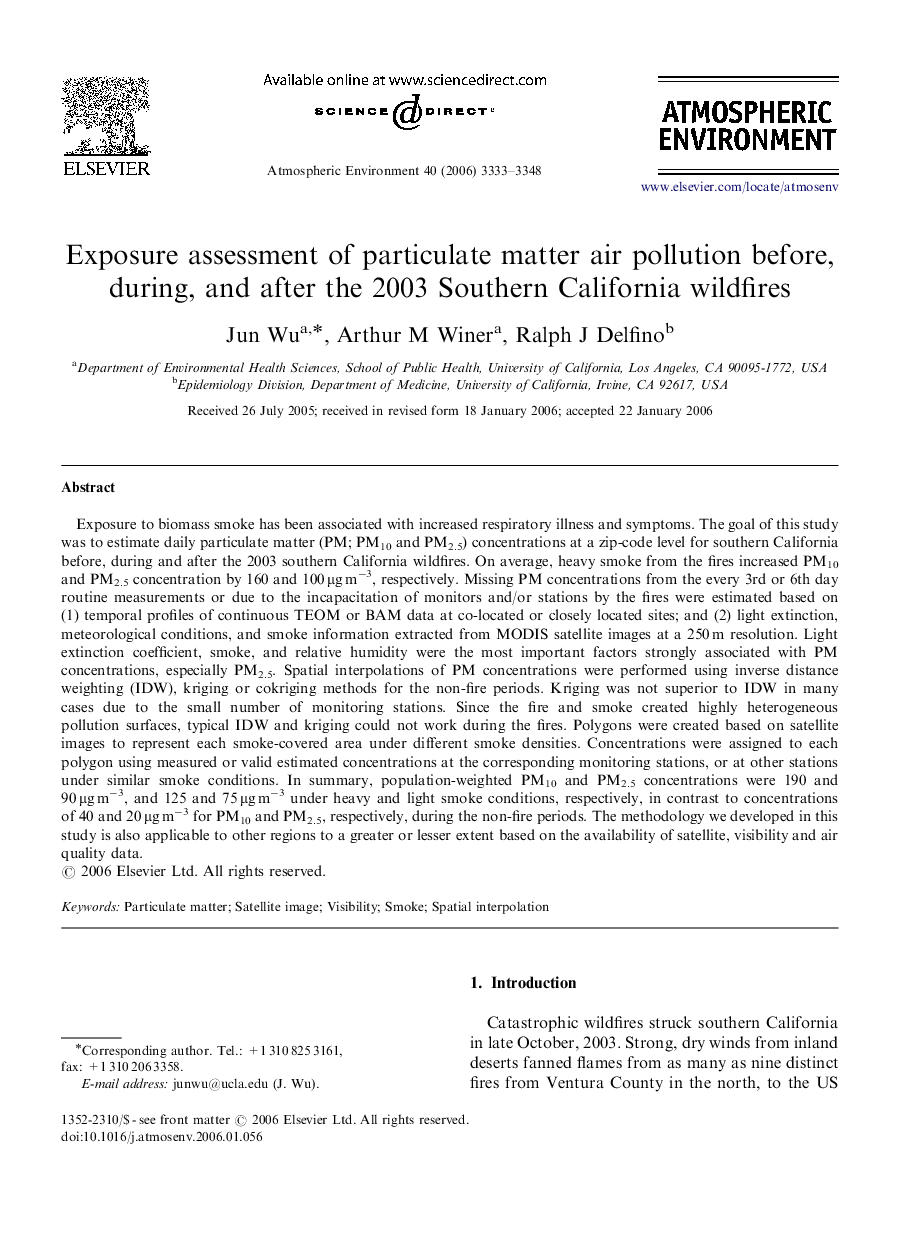| کد مقاله | کد نشریه | سال انتشار | مقاله انگلیسی | نسخه تمام متن |
|---|---|---|---|---|
| 4444834 | 1311257 | 2006 | 16 صفحه PDF | دانلود رایگان |

Exposure to biomass smoke has been associated with increased respiratory illness and symptoms. The goal of this study was to estimate daily particulate matter (PM; PM10 and PM2.5) concentrations at a zip-code level for southern California before, during and after the 2003 southern California wildfires. On average, heavy smoke from the fires increased PM10 and PM2.5 concentration by 160 and 100 μg m−3, respectively. Missing PM concentrations from the every 3rd or 6th day routine measurements or due to the incapacitation of monitors and/or stations by the fires were estimated based on (1) temporal profiles of continuous TEOM or BAM data at co-located or closely located sites; and (2) light extinction, meteorological conditions, and smoke information extracted from MODIS satellite images at a 250 m resolution. Light extinction coefficient, smoke, and relative humidity were the most important factors strongly associated with PM concentrations, especially PM2.5. Spatial interpolations of PM concentrations were performed using inverse distance weighting (IDW), kriging or cokriging methods for the non-fire periods. Kriging was not superior to IDW in many cases due to the small number of monitoring stations. Since the fire and smoke created highly heterogeneous pollution surfaces, typical IDW and kriging could not work during the fires. Polygons were created based on satellite images to represent each smoke-covered area under different smoke densities. Concentrations were assigned to each polygon using measured or valid estimated concentrations at the corresponding monitoring stations, or at other stations under similar smoke conditions. In summary, population-weighted PM10 and PM2.5 concentrations were 190 and 90 μg m−3, and 125 and 75 μg m−3 under heavy and light smoke conditions, respectively, in contrast to concentrations of 40 and 20 μg m−3 for PM10 and PM2.5, respectively, during the non-fire periods. The methodology we developed in this study is also applicable to other regions to a greater or lesser extent based on the availability of satellite, visibility and air quality data.
Journal: Atmospheric Environment - Volume 40, Issue 18, June 2006, Pages 3333–3348